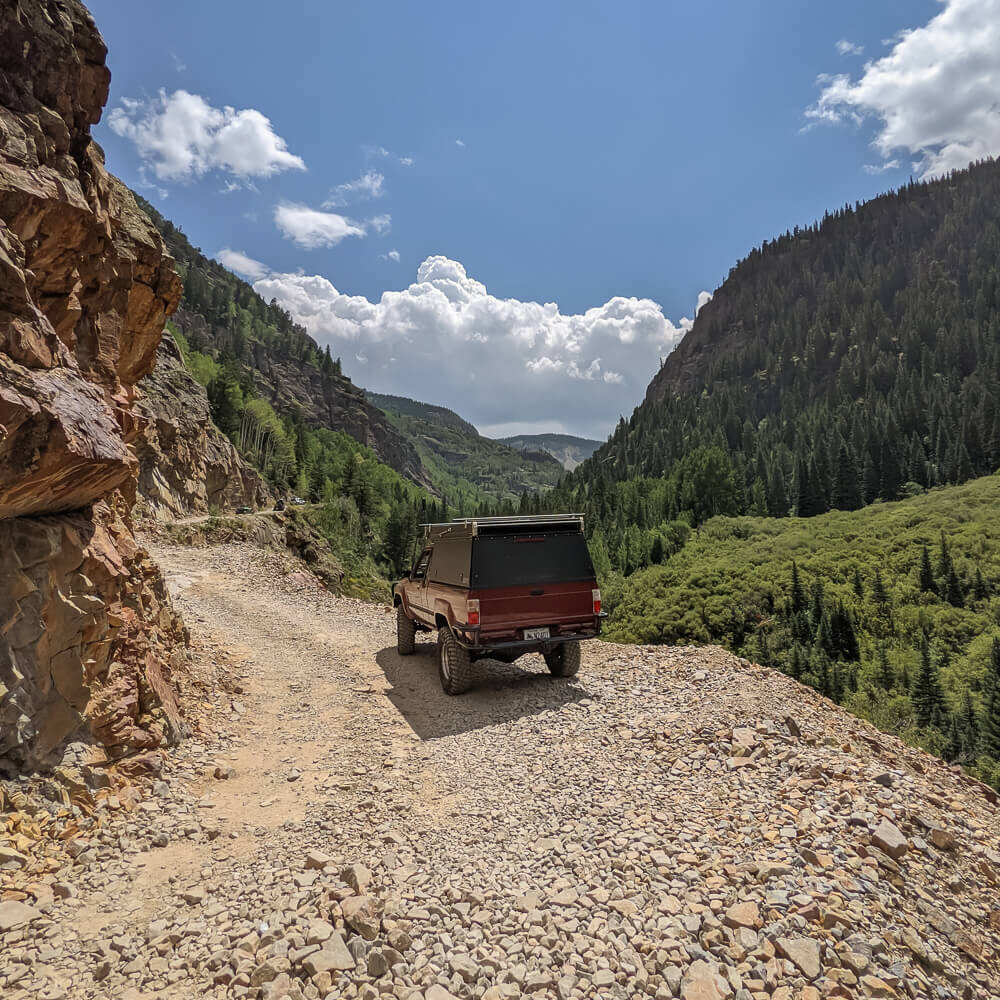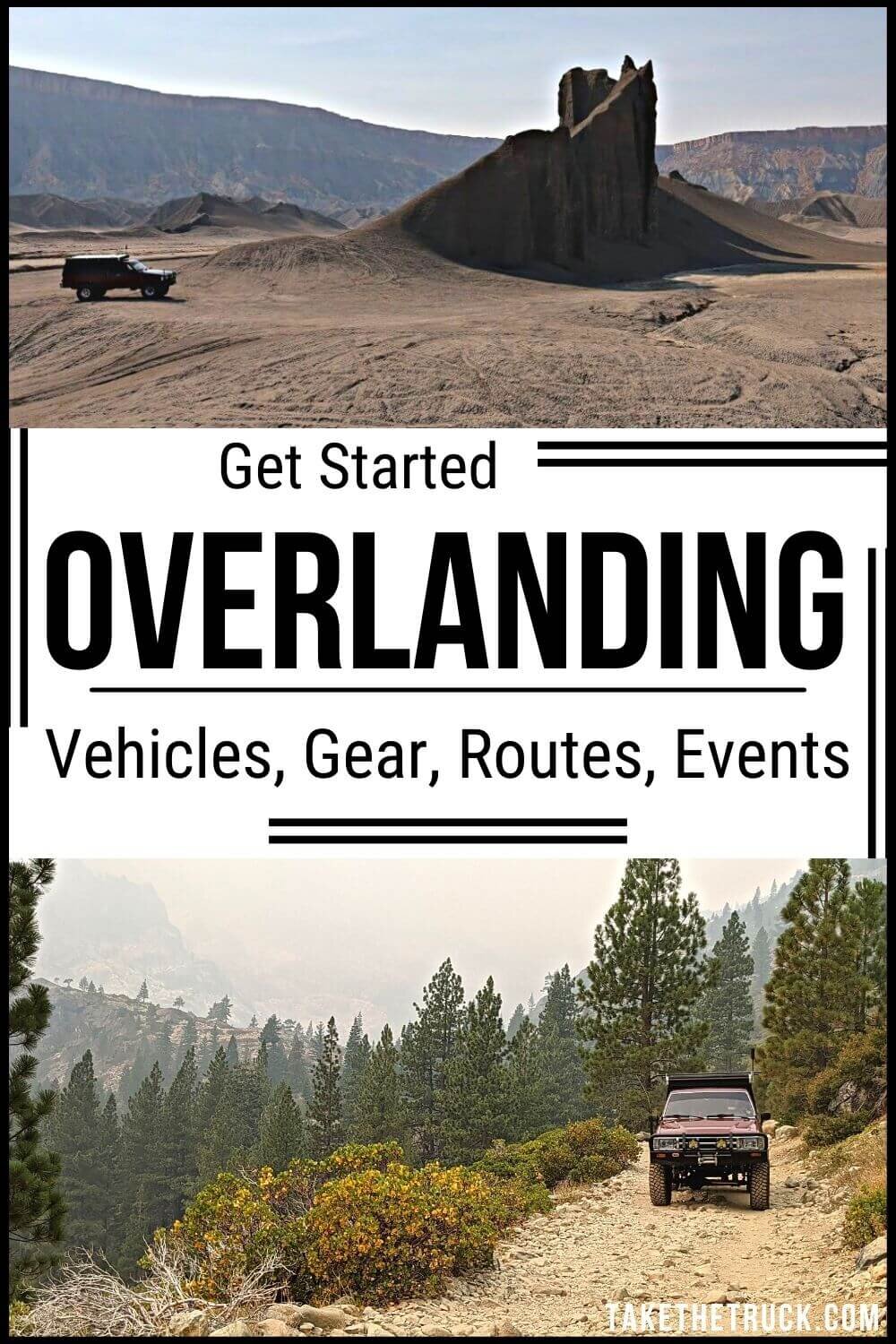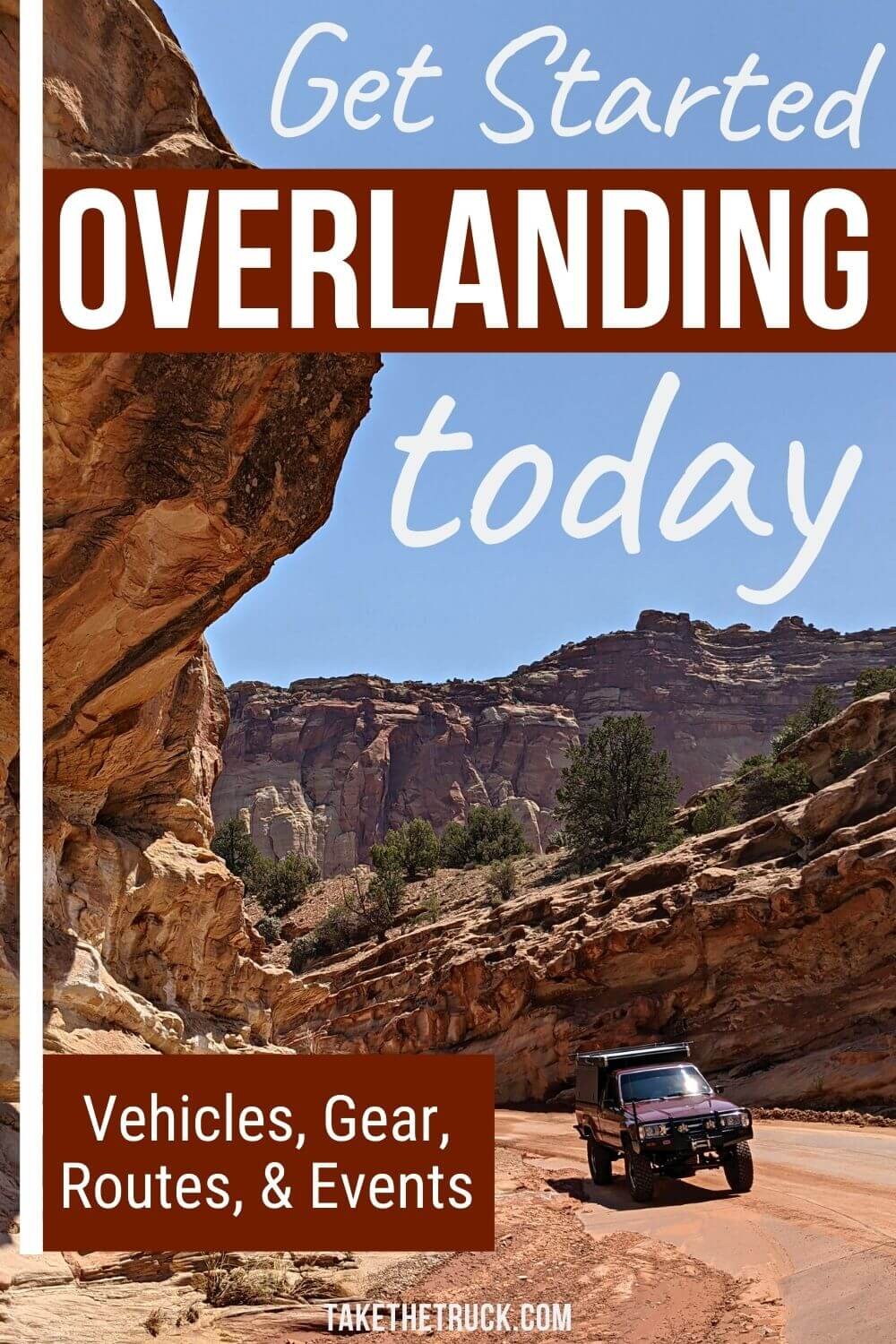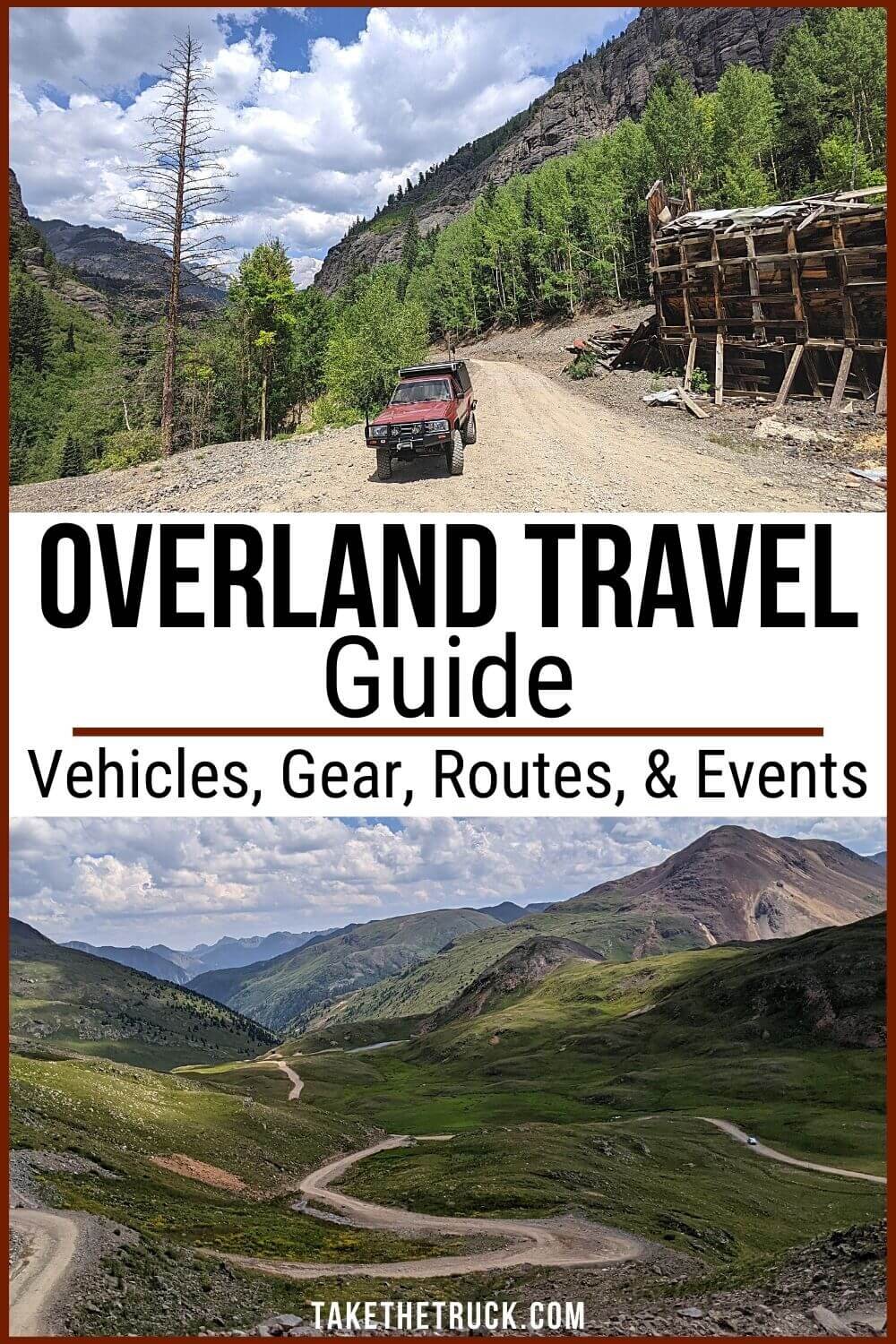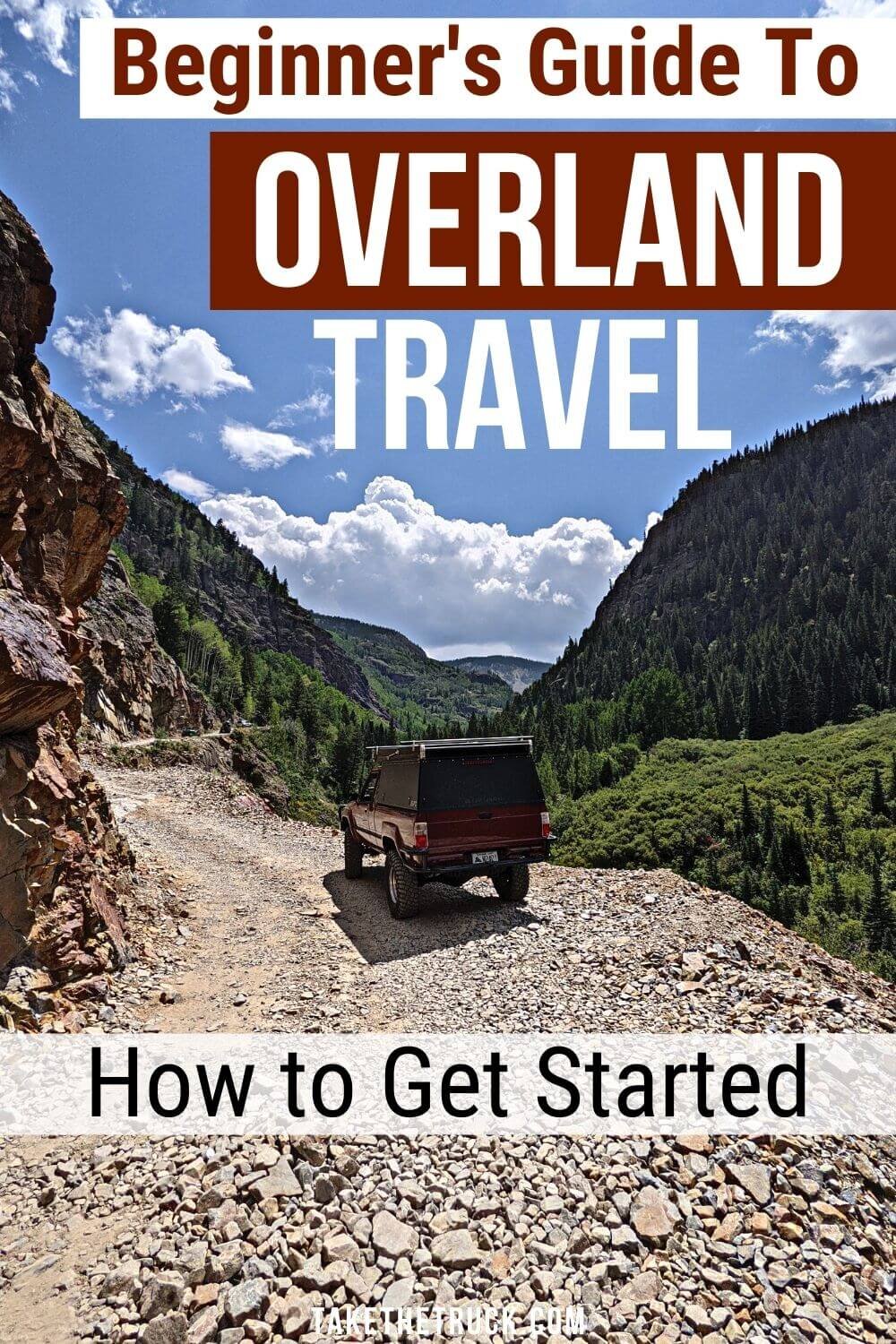Everything You Need to Know to Start Overlanding
What is Overlanding?
Overlanding has exploded in popularity over the last decade, and while it’s origins stretch back to the cattle-drivers crossing the early 20th century Australian outback, the term overlanding has evolved to encompass a wide array of mechanized off-road and on-road travel - predicated by the fact that the experience of the journey matters more than the destination.
While some go so far as to argue that to truly consider your travel “overlanding,” you must cross the border(s) of other countries, the reality is that as overlanding has been brought into more mainstream use the definition has become a bit more fluid.
It now more loosely consists of a combination of off roading, remote travel, and camping.
For a deeper dive into the history and process of defining what overlanding is, check out our post:
The Difference Between Overlanding and CampinG
“What’s the difference between overlanding and camping?”
This is a question that comes up A LOT when trying to describe overlanding, and as the concept of overlanding has become more and more popular it’s become very difficult to differentiate the two.
Below is a simple method we personally use as a guideline to distinguish between traditional vehicle-based camping and overlanding:
Trip Distance - How far will you be traveling?
Trip Duration - How long will you be traveling?
Destination - Where are you going?
Difficulty - How challenging is it to get there?
Generally for a trip to fall into the category of "overlanding" it would be:
Greater than a 1,000 miles
Longer than 7 days
Outside of your usual geographic territory
Require some degree of exertion, self-sufficiency, and skill in navigating and driving
So if you’re planning to go camp in your local state or national forest for the weekend and you’re less than 100 miles from home, it would generally be considered "camping."
If you’re planning a journey with a mostly off-highway route that will take several weeks or more, cover a few thousand miles, spread over multiple states, provinces, or countries then most would consider your trip an overland adventure - at least in the true spirit of the word overlanding.
Surprisingly, there is a lot of heated debate over defining lines between the two, but a good analogy can be found in comparing the very distinct terms you’d use to differentiate between “hiking" and "backpacking." Both are very different things and imply very different objectives just as "overlanding" and "camping" are very different things with very different objectives.
And there is nothing wrong with either one - one is not intrinsically or extrinsically better than the other, and both have ultimately the same goal: exploring and enjoying the incredible world we all share in an ethical manner.
So don’t get too hung up on the colloquialisms and parlance of the overlanding community, just get out there and start your adventure - here’s how.
*(This post contains affiliate links. This means we may receive a small commission, at no additional cost to you, if you make a purchase through a link. See our full disclosure.)
Overlanding Vehicle Selection
An overlanding vehicle, at its core, is simply the mechanical or automotive means to your overland adventures. And here’s a little secret: You DO NOT need an elaborate expedition rig to start overlanding!
In fact, the best vehicle to start overloading with is usually the one you already own - the one you can go out on an adventure with today!
Thousands of people all over the world have taken their 2WD cars, trucks, vans, motorcycles, and even bicycles to places most wouldn’t even dream of taking their high-dollar fully kitted-out overlanding rigs.
And they likely had a much more enjoyable and authentic overlanding experience too!
However, having a properly outfitted four wheel drive overland vehicle can give you much more flexibility on your overland adventures by allowing you to experience the places you travel more deeply, more independently, and more safely - provided that you take the time to learn how to drive off-road.
Becoming proficient at driving off-road takes a fair amount of practice and skill, and can entail some specialized safety and recovery gear (which we’ll discuss below). So if you’re new to overlanding and off-road driving, here’s what we’d recommend before making any overland vehicle choices:
Read. While not as beneficial as direct experience, knowing the principles of off road driving and the various functions and capabilities of four-wheel drive vehicles will give you context while learning.
One of our favorite books on the topic is Four-Wheel Drive: The Complete Guide* by Andrew St. Pierre White.Practice. Once you have selected an overlanding vehicle (whether it’s 4WD or not), practice with it! Take time to learn its capabilities, its limitations, and its weaknesses - as well as your own. This will enable you to make more informed decisions when considering overlanding trails and routes, vehicle modifications and gear purchases, and will ultimately save you money by not making unnecessary equipment purchases or needing expensive repairs on the trail.
Improve. Find an experienced friend or group to go out with, and to learn from. If you don’t know anyone with experience consider attending an overland expo or event (discussed in detail below). Often they’ll have classes and instruction included on a wide variety of overlanding and off-road driving topics. Plus, in an age of online shopping, they’re an incredible opportunity to meet directly with overlanding gear and equipment manufacturers, learn about their products, and experience them first-hand before spending your hard earned money.
For a more detailed walkthrough of things to look for when considering potential overland vehicles, check out:
How to Find a Budget-Friendly Overlanding Vehicle
If you are in the market for an overland vehicle, there are tons of budget-friendly, yet very off-road capable, vehicles to start your overlanding travels with that don’t cost an arm and a leg.
For help narrowing your search and selecting a used overland vehicle, check out the below guides:
Overlanding Gear and Recovery Equipment
Overlanding gear and recovery equipment consists of anything that can help to ensure your personal safety and comfort, or facilitate the safe recovery of your vehicle, while traveling overland.
While you’ve likely seen overland vehicles cruising around town laden down with all kinds of kit and recovery gear strapped to the outside, oftentimes a simpler set of gear will get you out of the majority of situations. A good place to start is to include:
Emergency Communication Device - such as a GMRS radio*, HAM radio (license required), or Satellite Communicator* to reach out for help when needed, check out our complete guide to Overland Off Road Radios and Emergency Communication Devices for more help selecting a comms setup for your adventures.
Off Road Jack - these have a number of uses while overlanding, including changing or repairing tires and some moderate off-road vehicle repositioning, check out our Complete Guide to Off Road Jacks for help selecting one that’s right for you and your overland vehicle.
Basic Vehicle Recovery Kit* - for vehicle assisted off-road recoveries, these kits include a snatch strap, shackles, and a pair of gloves
Set of Recovery Boards* - to provide traction in soft terrain conditions such as sand or mud
Off Road Shovel - to dig out your vehicle if it becomes mired or to make room for a jack or recovery boards (see our guide on How to Choose the Best Off Road Shovel for Overlanding for more info and tips)
Saw* and/or Axe - to clear downed trees
Portable Air Compressor* - for airing up tires after repair or airing down
Quality Tire Repair Kit* - for fixing flat tires
Decent First Aid Kit* - preferably with an accompanying wilderness medicine handbook for reference when needed
Overland Vehicle Awning - these provide additional protection from the elements and much shade from the sun too, and our guide will help you select one that’s right for your needs, vehicle, and budget.
Traditional Truck or Car Camping Gear - for shelter, cooking, sleeping, and storing food, clothing, and water.
Off Road Tool Kit - when you’re traveling overland things break, on and off road, and when they do you’ll want to be prepared. Our guide on How to Pack a Traveling Tool Kit for Overlanding and Off Roading can help you decide what tools to keep handy on your adventures.
For a more in-depth guide and how to use your overlanding gear, check out:
Our Overlanding Gear Page - to see all the gear we use on our own family overland travels
How to Select Overlanding Tires and how to Air Down Off Road
Selecting Overlanding Tires
Tire choice is one of the most important aspects of an overland vehicle, because the entirety of your overlanding journey depends on them holding up to the rigors of on and off-road adventures.
You’ll need to consider your overland vehicle’s tire size limitations, it’s fully-laden gross vehicle weight, as well as the terrain conditions you’ll be traversing, before selecting an overland tire design that best fits your needs.
All-Terrain Tires
All-terrain tires are a great compromise between off-road and on-pavement performance, and cover a wide range of tread types.
Common Features:
Interconnected tread blocks for moderate off-road capabilities
Typically have siping in each tread block for better grip on smooth, wet, or icy surfaces
Good tread life
A quieter ride than more aggressive off-road tires
Pretty decent on-road handling and fuel economy
If your overland travels will be predominantly on-road with the occasional off-roading, all-terrain overland tires are a great choice.
Mud-Terrain Tires
Mud-terrain tires have been the de facto tire of the off-roading community. And they can provide excellent all-around performance for overland adventures.
Common Features:
Larger tread lugs with more space between tread blocks to grip soft terrain
These larger voids also allow for improved gravel ejection and clean out more easily with a bit of wheel spin.
On-road handling is not as good as an all-terrain tire
Typically tread life isn't as long as an all-terrain (but this has gotten significantly better with technology and materials advancements - we personally got 50k miles out of our last set)
Increased road noise is also typical with mud-terrain tires (though this too has improved greatly in recent years)
Usually utilize thicker sidewalls (3-ply)
If you’re planning to travel in a region with a lot of soft terrain conditions like mud or sand, mud-terrain overland tires are a great choice.
Hybrid Tires
A relatively new category of overland tire, hybrid tires attempt to bridge the gap between all-terrain on-road handling and mud-terrain off-road performance.
Common Features:
More aggressive side lug patterns with larger voids between the side lugs
Tighter tread pattern in the center to reduce road noise
More siping than a mud-terrain
Typically utilize 3-ply sidewalls for improved puncture resistance
If your overland travels will be predominantly off-road with the occasional paved sections, hybrid tires may prove to be the best overland tire for your adventures.
For more in-depth help with overlanding tire sizing, selection, and care check out:
Airing Down Your Tires Off-Road
Airing down your tires off road is one of the single best improvements you can make to your overland vehicle’s off-road handling and performance. And the best part is it doesn’t have to cost anything!
The Benefits
Increased traction off road
Improved ride comfort on rough terrain
Reduced likelihood of tire damage or excessive wear
When Should you Air Down, and How Much?
While there’s no universal guideline on when airing down will be beneficial or what exact pressure you should air down to, there are some general rules of thumb:
General off-road driving on rough dirt roads, two-track, and mild trails - a 20-25% reduction or 10 PSI is a good place to start
Traversing slick-rock or more challenging trails with loose terrain, a 30-35% pressure reduction may be in order
Very soft terrain conditions such as sand or mud may benefit from up to a 50% pressure reduction
What You Need to Air Down
A quality off road tire performs significantly better when airing down
An accurate tire pressure gauge (preferably with a dial)
A device for letting air out of your tires (like this tire deflator*)
And a means to air your tires back up (remember that portable air compressor we discussed earlier!)
For more info and tips for airing down and back up, go here:
How to Plan an Overlanding Trip
There are a ton of factors to consider when planning an overlanding trip, and it can seem a bit overwhelming at times.
We’ve written a detailed guide that walks through the best method we’ve found for overland trip planning, using story elements as a framework for planning your own epic adventures by factoring in:
Who is going
What is needed
When you’re leaving (and for how long)
Where you will go
Why you’re going
How you’ll get there ethically, safely, and legally
Planning an overlanding trip in this way ensures that not only will you be adequately prepared for the adventure ahead, but also that you can more easily recount and share the story of your trip with others.
Check it out the guide here:
how to find Overlanding Trails and Routes
If you’re looking for a place to start your overland adventures, we’ve outlined multiple great overlanding trails throughout North America to help you get started - including:
Valley of the Gods Road (Utah)
The Alpine Loop (Colorado)
Smokey Mountain Road (Utah)
White Rim Trail (Utah)
El Camino Del Diablo (Arizona)
High Watermark Trail (Arkansas)
The Mojave Road (California)
The California Backcountry Discovery Trails System (California)
The Georgia Traverse (Georgia)
The Dalton Highway (Alaska)
The Baja Peninsula (Baja California Peninsula, MX)
The Trans-Wisconsin Adventure Trail (Wisconsin)
The Enchanted Rockies Trail (Colorado)
The Idaho Backcountry Discovery Route (Idaho)
Trans-America Trail
The Pan-American Highway
While several of these overlanding trails and routes would not technically fall under what most would consider to be “overlanding”, the shorter routes can give you the opportunity to hone your overland trip planning skills and build up to the more lengthy and challenging overland trails.
For details about all these overlanding routes check out:
How to Join the Overlanding Community
(Overland Expos, Events, Groups, and Rallies)
Arguably one of the best parts of overlanding is the cultural engagement and community that surrounds overland travel. There’s no better way to get outfitted, inspired, and educated about overland travel than to get plugged into some of the numerous overland expos, events, groups, and rallies that are out there.
Our detailed (and continuously updated) list of different events, groups, rallies, and expos will help you select, connect, and engage with the overlanding community in whatever way you’re able.
Find it here:
getting Inspired to Start Overlanding
There’s no better way to inspire your own overland travels than to look at the overland adventures of others - particularly those that have been overlanding throughout the world and taken the time and effort to share their stories well.
Our summary of our favorite Overland Adventures That Will Inspire Your Own Wanderlust shares a diverse selection of overlanding stories, books, and documentaries from both the past and present - if you’re not already feeling the urge to hit the road and begin your own overland travels, it’s sure to spark your desire to start.
Find it here:
And if you’re heart is set on long-term international overland travel, you should check out one of our favorite resources for getting prepared: Graeme Robert Bell & Louisa Bell’s Travel the Planet Overland: Field Manual*
There you have it, everything you need to start overlanding TODAY! If you have any questions as you get started please drop a comment below - we’d love to help!
And if you’d like more helpful overlanding, truck camping, and family travel info SUBSCRIBE for future blog updates.
Thanks for reading!
Related Posts:
Pin this Post to Your Overlanding Board!
We’d appreciate a share!

